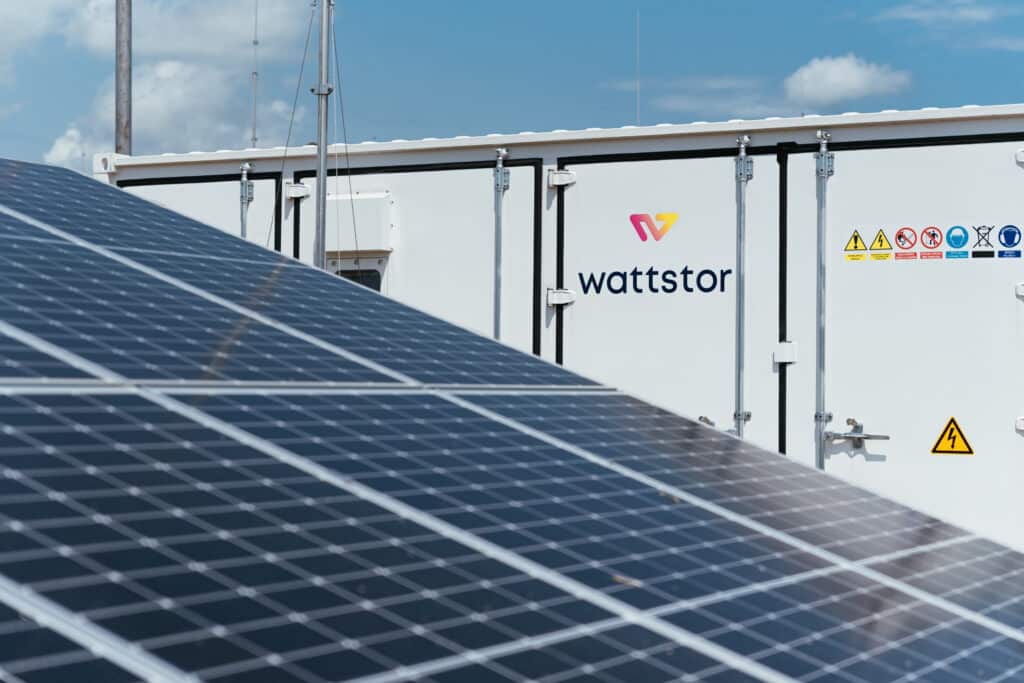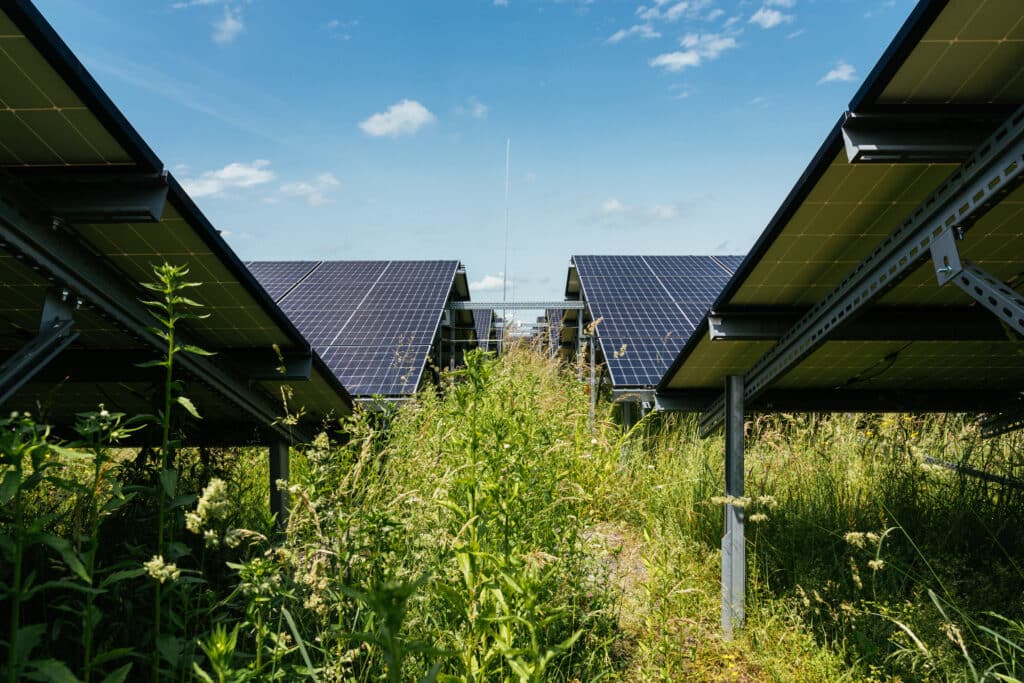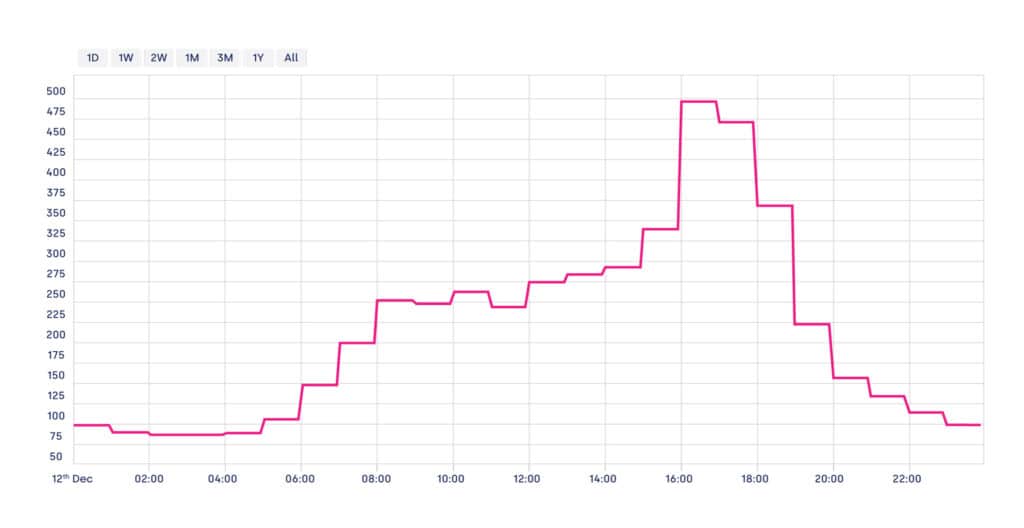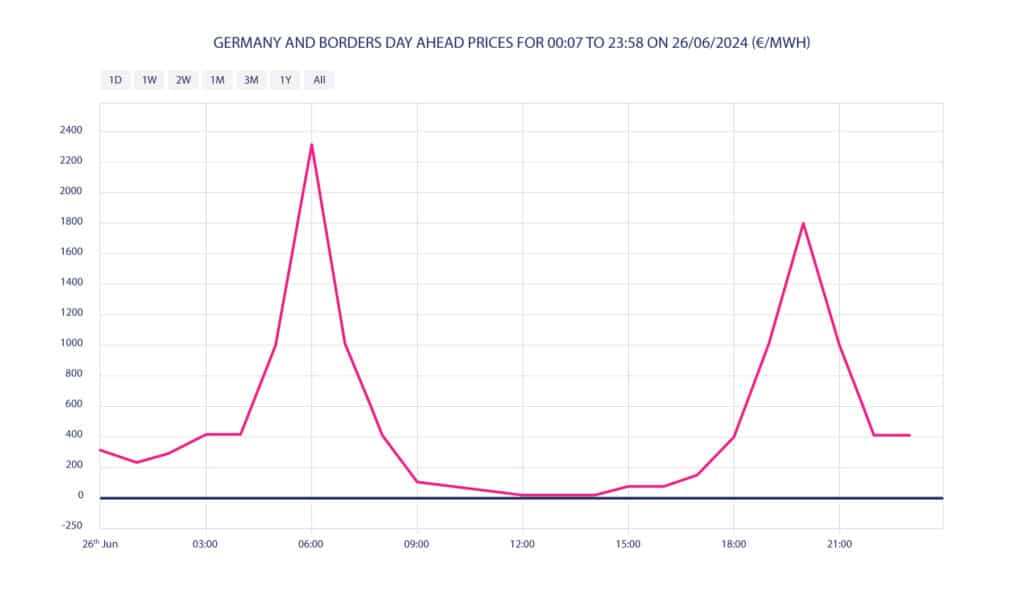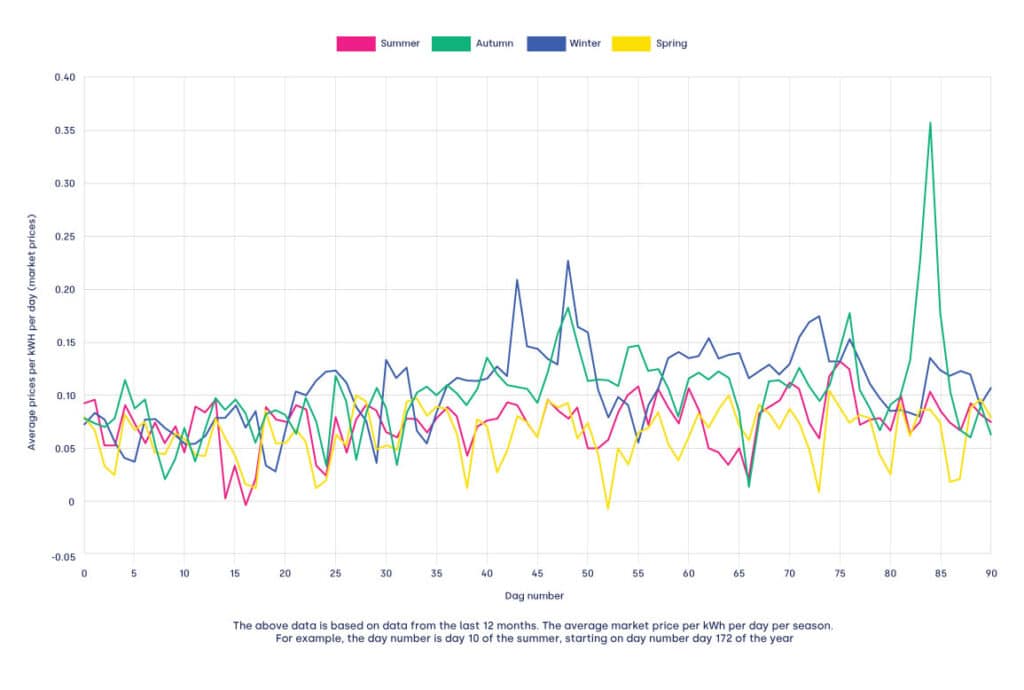Sustainable and predictable energy prices are no longer nice-to-haves.
They are business critical.
From unprecedented spikes to spells of negative pricing, the cost of electricity is oscillating like never before. By playing ahead of the price volatility game, businesses can make the most of price drops while protecting themselves from sudden surges. Even better, they can find viable ways to create additional revenue streams from exporting electricity to the grid when conditions are best.
Read on to learn how to take advantage of price volatility and turn a headache into a business opportunity, to reach your sustainability targets, while profiting from it.
ACCESS THE FULL WHITEPAPER HERE »
Why are energy prices so volatile in Europe?
While electricity prices have always fluctuated, recent years have seen heightened volatility due to macro-level disruptions like the war in Ukraine, which impacted global energy supply chains.
At the same time, the growing share of weather-dependent renewables has made short-term price swings more pronounced. This has led to increasingly frequent extreme pricing events, including both price spikes and periods of negative pricing.
The cost of electricity for residential and commercial users depends in part on the day-ahead market – the wholesale market where electricity is traded a day in advance. Generators submit bids to sell electricity, and suppliers submit offers to buy it.
Because large-scale electricity storage is limited, supply must constantly match demand in real-time. Short-term price fluctuations in the day-ahead market are influenced by micro factors, such as sudden changes in wind or solar generation, which can cause rapid shifts in supply. Meanwhile, broader macro factors—such as geopolitical events, economic conditions, and energy policy—affect overall market trends and long-term pricing.
Will electricity price volatility continue?
While it is impossible to predict energy trends with absolute certainty, abundant data shows that price volatility is likely not only to continue, but to increase. For example, the Financial Times reported 7,841 hours of negative prices in Europe in the first eight months of 2024 – a new record.
As more renewables enter the grid, it’s expected that spikes and dips in generation capacity will increasingly be matched by spikes and dips in prices. When supply is limited, more expensive generation like gas power plants must be brought online. When supply is plentiful—thanks to wind and sun—prices drop because the marginal cost of renewable generation is essentially zero.
“In the Netherlands, we are next to the North Sea and have huge wind farms as well as a big adoption of solar,” commented Ronald Richardson, Business Development Director at Wattstor Netherlands. “This is the real cause of why volatility is so aggressive. The big concern is price peaks in the winter months, when there is relatively little wind and hardly any sun. In this case, the prices go up because renewables don’t produce and we need to use gas turbines.”
“In the UK, there’s no coal anymore, but coal actually makes the prices flat,” added Wattstor’s CEO, Stephan Marty. “When there isn’t enough renewable generation, we rely on gas—but gas is expensive and causes prices to peak.”
Negative pricing and renewables cannibalisation
More wind and solar in our power mix means that renewables play an increasing role in setting the price of electricity. But generating energy from solar and wind is much cheaper than extracting it from fossil fuels. The result? When renewable generation is at peak capacity, market prices plummet and can drop below zero. This is known as renewables cannibalisation.
How is price volatility impacting Europe?
The European power grid is the most interconnected and resilient in the world. It connects 39 Transmission System Operators (TSOs), enabling electricity to be traded and shared across borders. This interconnectedness allows for increased security and a better use of renewables. It also means that price fluctuations affecting one country will generally be reflected in all other connected countries.
If we look at energy price trends in different countries over the past year, we will see that there are common periods of spikes and dips. Nevertheless, the specificities of each region also affect how businesses are impacted by price volatility, and the extent to which they can benefit from it with the right insights, tech and tariffs.
UK businesses living up to ambitious net zero targets
Historically, the UK has been at the forefront of the clean energy transition. It has been one of the first countries to establish a legally binding net zero target in 2019, and to create an independent body – the Climate Change Committee – with statutory authority to track the government’s progress toward decarbonisation.
With the last coal-fired power plant closing its doors in October 2024 and renewables generating 51% of electricity in the same year, the country has made steady progress in reaching its targets.
In this rapidly changing energy landscape, UK businesses are playing a central role, investing at scale in renewable energy generation. Yet, the recent exacerbation in energy price volatility has caused concerns.
The graph above shows that on 12th December 2024, prices spiked from 87.08 GBP/MWh to 496.3 GBP/MWh in a matter of hours.
At the same time, instances of negative pricing are also increasing: 149 hours in 2024, compared to just 29 in 2022. This trend is expected to continue, with up to 1000 hours of negative pricing expected in 2027.
This has led to a sharp increase in the uptake of battery energy storage systems (BESS), with wholesale BESS revenues rising by 42% in August 2024. This is not surprising, as innovative BESS solutions, paired with real-time energy market insights, can provide a viable and cost-effective solution to the challenges of energy price volatility.
Germany: the pressing need for more flexibility
Thanks to a strong push towards decarbonisation, 2024 was a record high for renewable generation in Germany. The total share of renewable net generation was around 58.6% in 2024, meaning electricity generation was lower in CO₂ emissions than ever before. At the same time, as a global manufacturing powerhouse, energy resilience and price stability are a top priority for Germany’s economic growth – and this is where the country is experiencing challenges.
The graph below shows electricity price fluctuations on 26th June, 2024. It’s easy to see that prices went from spiking at 6:00 am (2,325.83 EUR/MWh), to negative at 12:00 pm (-0.06 EUR/MWh). To put figures in context, let’s imagine the same thing happened to prices at a petrol station. A similar price fluctuation means that filling up your car at 6:00 am would have cost you about EUR 1,035, when you could have done it for free at 12:00 pm.
Netherlands: growing businesses despite grid challenges
Thanks to its location near the North Sea and the vast adoption of offshore wind, the Netherlands enjoy one of the highest percentages of renewable energy on its grid. This is certainly good news for its decarbonisation efforts. Although, challenges remain with regard to grid congestion, price fluctuations and power availability.
During periods of low generation, gas has to be used to generate electricity – leading to price spikes that are especially concerning for margin-sensitive businesses. The graph below shows energy price trends during 2024. It is easy to see that, despite being relatively stable for the rest of the year, prices spiked in autumn, when output from renewables was low.
Transport capacity is also an issue. The map below shows areas with transport capacity shortages, exposing the extent of the problem. Transport challenges also mean that businesses generating excess renewable energy cannot export it.
So, how can organisations grow their business when prices are unpredictable and capacity is scarce?
Onsite renewables and effective energy storage options offer a practical and cost-effective solution. BESS solutions can help address both price volatility and grid congestion, giving businesses an extra gear to expand their operations while remaining sustainable. In particular, Wattstor’s DC-coupled battery systems can help when grid constraints impose limits on the size of businesses’ renewable projects.
Czech Republic: supporting businesses and the grid through the net-zero transition
Due to a high reliance on coal, nuclear and hydropower, the Czech Republic has traditionally enjoyed relatively stable energy prices. However, pressures from the European Union to decarbonise its power system and meet ambitious CO₂ reduction targets mean that the country is trying to increase its renewable penetration and decrease coal production.
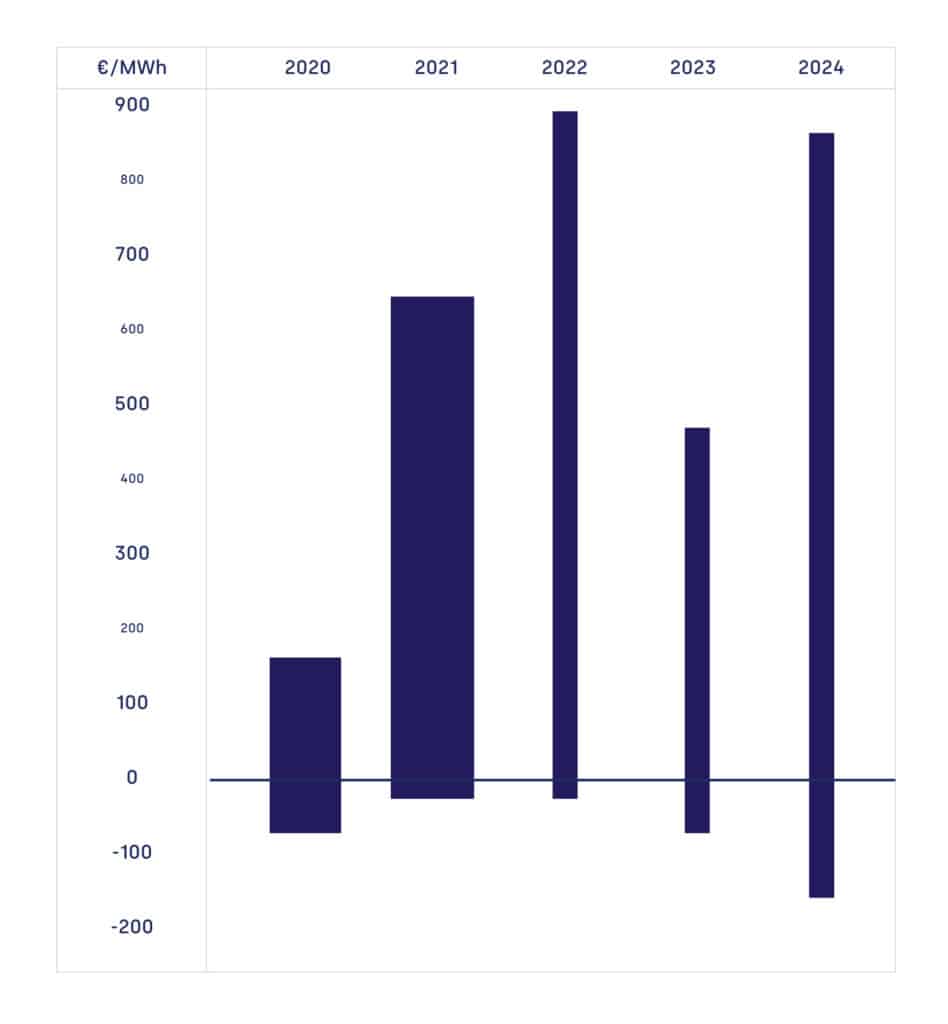
THE CZECH REPUBLIC’S AVERAGE PRICES FROM 2020 TO 2024 (€/MWH)
This is mainly being achieved through new renewable domestic generation.
The result is that the traditional stability of Czech energy prices is starting to decline. The table below shows how price fluctuations have impacted the country in the past four years. It’s clear that volatility is not only present, but massively increasing, and that instances of negative prices are becoming more frequent.
How will energy price volatility impact your business?
Wattstor experts answer your Frequently Asked Questions (FAQs) below:
How Wattstor helps business across Europe
From the only flexi-capped tariff on the market to fully funded onsite energy systems, Wattstor provides everything businesses need to turn energy price volatility into a strategic advantage.
(1) Price Protect: Unique Renewable Tariffs
Price Protect is Wattstor’s exclusive, fully dynamic renewable energy tariff with a built-in price cap. It enables businesses to benefit from market dips without being exposed to extreme price spikes—a flexible and future-ready solution for organisations ready to think outside the grid.
(2) BESS (Battery Energy Storage Systems)
We provide tailored energy storage solutions designed around your specific energy usage profile. Our systems are not only installed for you—they’re continuously monitored and optimised to meet your evolving needs.
(3) Podium: AI-powered Energy Management System
Podium is the intelligent brain behind all Wattstor solutions. It’s an advanced, AI-based energy management system (EMS) that processes data from market prices, energy forecasts, onsite generation, storage capacity, and site demand. It then makes real-time decisions to maximise efficiency and minimise costs. Think of it as your 24/7 virtual energy manager.
From price uncertainty to financial stability
“It is our vision to empower every business and community to actively participate in the green energy transition and financially benefit from it.” – Stephan Marty, Wattstor CEO
Wattstor is a next-generation energy company providing complete onsite renewable energy solutions. We believe clean, affordable energy is a business essential, and are committed to removing all obstacles to the clean energy transition.
Our fully funded energy systems help make net zero a reality for I&C organisations in all sectors – with no upfront costs and guaranteed lower-than-grid electricity prices.
From industry-leading consultancy, to unique tariffs, state-of-the-art solar + BESS, and a powerful AI-based EMS, Wattstor is the one-stop specialist for organisations eager to fast forward their net zero ambitions.
Sales: [email protected]
Technical: [email protected]
DOWNLOAD THE FULL WHITEPAPER »
Know someone who'd be interested in this? Why not share it:

